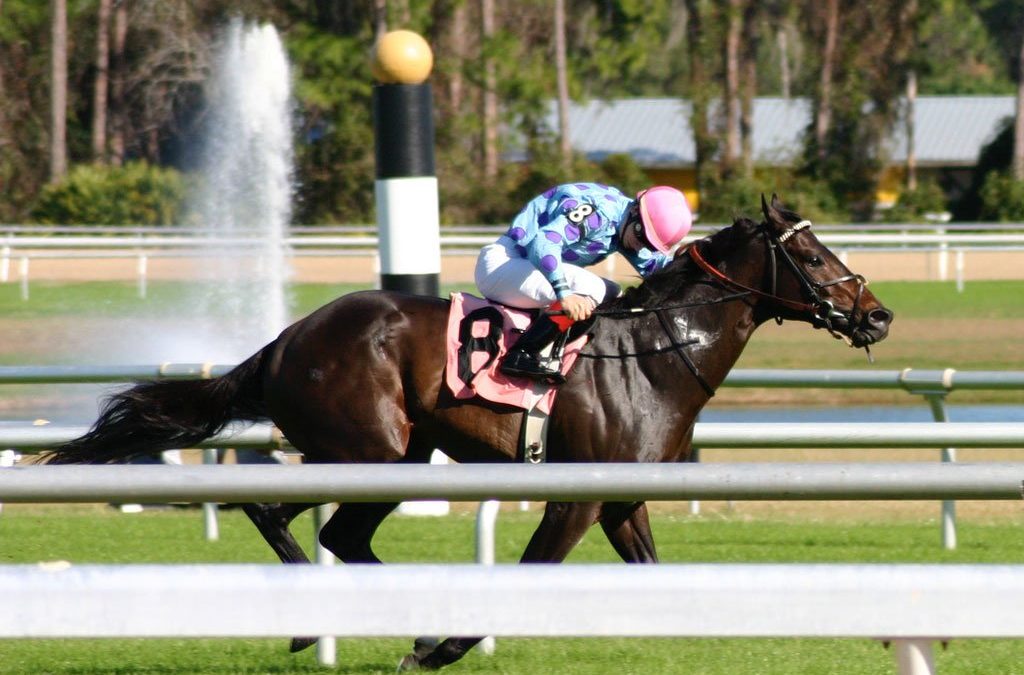Milkshakes Leave a Bad Taste
Sodium bicarbonate loading could delay onset of fatigue and mask use or detection of drugs
At every level of racing, so much time and money are invested in each horse that trainers and owners want to find the extra edge that will help even the most astutely trained and conditioned athlete be more competitive. Manipulation and timing of feeding, feeds, and supplements can alter the physical performance of an individual horse, and an amazing array of performance enhancers or ergogenic aids are available.
Scores of animal health-related catalogs and periodicals tout the benefits of supplements and feed additives that will allow horses to run longer, stay or become sounder, or build muscular strength, power, and stamina. Many of these nutraceuticals are not considered drugs and, therefore, are not required by the United States Food and Drug Administration to be clinically tested.
Lack of testing often creates doubt as to the validity, credibility, and usefulness of these types of supplements, and, although they are not classified as drugs, many might be contrary to the rules of racing. However, anecdotal claims of success using various compounds abound.
Bicarbonate loading
One such controversial substance that has been actively administered to racehorses since approximately 1989 in an effort to enhance performance is sodium bicarbonate, commonly known as baking soda. A “milkshake” is a colloquial term used to describe the combination of approximately 500 grams of sodium bicarbonate, glucose, and often some other additives.
Recently, citrates, citric acid, lactate, succinate, and acetate salt have been added to the list of non-bicarbonate alkalising agents. These substances reduce acidic conditions within the actively contracting muscle cells and are used in milkshakes as buffers. Buffers such as bicarbonate and carbon dioxide (CO2) minimize change in pH (measure of acidity or alkalinity) in a solution such as blood or intra- and extra-cellular fluid.
In reality, a milkshake’s usefulness is more applicable to races of middle or longer distances, as a horse produces little lactic acid during races of six furlongs or less, and it is without a doubt more effective in Standardbred racing, where repeated bouts of exercise (heats) cause greater accumulation of lactic acid over time. However, reported use of milkshakes in Thoroughbred racing is still evident.
In most cases, over, under, or poorly trained individuals benefit from the administration of alkalising agents, as opposed to a horse that is nutritionally and metabolically fit and of sound structure. A horse entering a race in less than optimum condition will have to work harder to produce maximum performance and is expected to respond in a positive manner to any exogenous help it might receive.
Acid neutralized
Traditionally administered via nasogastric tube prior to a race, sodium bicarbonate milkshakes might be effective in neutralizing acid in muscle cells by raising the pH of the blood and, therefore, delaying the onset of fatigue in working muscle, which might permit the horse to go longer at peak rate of endurance or speed.
During racing, controlling the pH of the blood is crucial in counteracting the buildup of lactic acid and other toxins that are produced from exercising muscle. When muscle contracts for extended periods of time at fairly high speed, the interior of the muscle cell becomes highly acidic, resulting in the progressive failure of energy-producing pathways and leading to fatigue.
Introducing bicarbonate into the system does not change the pH of the muscle cell, only the blood. The exact metabolic pathway that enables bicarbonate to work so well remains elusive, but it is theorized that, as blood pH increases during intense exercise, acidity leaves the muscle via a concentration gradient, allowing the energy-generating pathways to continue functioning efficiently.
The neutralization of lactic acid in the horse is the same as in all mammals and is termed acid-base regulation: the ability of the body to regulate the pH of body fluids via chemical buffers. Acid-base status must be tightly regulated because metabolism is highly sensitive to fluctuations in pH.
The pH of blood is normally alkaline or basic at 7.4, and 7.0 is neutral. An increase in pH above 7.4 is termed alkalosis. Conversely, a decrease in pH is called acidosis. Blood pH is decreased due to a number of factors: production of lactic acid; carbon dioxide production during aerobic and anaerobic respiration; metabolism of proteins and other organic molecules; or loss of bicarbonate in the urine or from diarrhea.
Bicarbonate, called a base, is a natural component of blood and is especially effective at neutralizing lactic acid produced during maximal exercise. When sodium bicarbonate is present in sufficient or excessive amounts in the bloodstream, such as during times of intensive exercise, acid in the muscle is pulled out of the cell into the bloodstream. There it reacts with sodium bicarbonate to form a compound called carbonic acid, which is a weak acid and does not have negative effects of a strong acid such as lactic acid on muscle cell metabolism.
When pH in the muscle cell and the blood eventually returns to normal during the recovery phase of exercise, the reaction is reversed and carbonic acid dissociates from the strong acid. This metabolic process is termed the bicarbonate-buffer system.
Measuring levels
Bicarbonate levels are measured in blood along with carbon dioxide as Plasma Total Carbon Dioxide (TCO2). Analysis is done in the laboratory on a blood-gas autoanalyzer using a blood sample collected from the horse after racing and the units of measurement are millimoles per liter (mmol/l).
Horses consuming pasture grasses obtain a natural, endogenous level of bicarbonate in the plasma in the range of 26 mmol/l to 31 mmol/l. Performance horses are fed commercial forage and grain preparations, which contain higher amounts of bicarbonate. Therefore, the level of TCO2 in their plasma increases to a range of about 27 mmol/l to 32 mmol/l but rarely exceeds 33 mmol/l.
In Australia, the highest allowable concentration for Standardbred and Thoroughbred racing for TCO2 is set at 35 mmol/l, while in the U.S., it is generally accepted at below 37 mmol/l. For horses administered bleeder medication, below 39 mmol/l is acceptable. The higher concentration is allowed for bleeders because their blood is more concentrated due to the diuretic effects of furosemide.
Individual variation can make detection of bicarbonate loading quite difficult, as some horses may naturally have a higher concentration of bicarbonate and carbon dioxide at any given time. However, any horse that tests at or above these levels is considered to have been administered or injected with sodium bicarbonate or some other alkalising substances to enhance the horse’s performance during a race and the test is deemed positive.
Masking effect
Several schools of thought exist concerning the use of milkshakes in hiding or masking the use of other drugs. It is theorized that the administration of alkaline sub- stances such as sodium bicarbonate can affect the excretion of some drugs. Drugs that are of a basic nature might be excreted in lower concentrations and for a longer duration, while those that are more acidic could be excreted more rapidly. One study showed significant increases in water consumption two hours after dosing and a three-fold increase in urine production for 18 hours following the administration of 250 grams of sodium bicarbonate.
Sodium bicarbonate administration also will acutely increase sodium and bicarbonate output in the urine sample. This masking effect seems to be most effective for drugs such as lidocaine, procaine, and cocaine. A case that occurred in Australia found the drug etorphine hidden behind the administration of a sodium bicarbonate milkshake, although it was considered a “light but positive reaction.”
On February 14, 2003, Daily Racing Form reported the possibility of milkshakes being used to administer the anti-inflammatory drug dimethyl sulfoxide (DMSO) orally prior to racing. According to the Form, six positive test results at Gulfstream Park indicated threshold limits of DMSO had been exceeded. The positives raised awareness that DMSO was possibly being laced into milkshakes to provide pain relief and, therefore, prolong the onset of fatigue in racehorses.
However, Gulfstream steward Charlie Camac told the Form the positives were “not a big deal” and could have resulted from topical application of the medication. In response, Cindy Baker, D.V.M., Ph.D., director of Florida’s drug testing laboratory, told the Form that the positives could not have been caused as the result of application of DMSO on a horse’s skin and the DMSO almost surely was administered orally or injected into a vein. Gulfstream officials posted a warning on the track’s overnight sheet that finding DMSO in a post-race test is a violation and that a topical dressing can result in a positive test.
“They didn’t discuss with the lab why they put that out,” Baker told the Form. “I don’t know where they got that information. If you have a positive test, I would be very skeptical of anyone who says they only put this on the horse’s legs.”
Lack of uniform rules
In certain situations, milkshakes are effective in enhancing performance in Thoroughbreds that compete at a distance of one mile or more. However, there is a lack of coordinated regulation throughout various racing jurisdictions in the U.S.
Some jurisdictions have banned the use of the substance and will fine a trainer with a horse that tests in violation, yet others do not. Mitzi Fisher, D.V.M., a Kentucky State Racing Commission veterinarian, said Thoroughbreds in the state rarely are test- ed for bicarbonate loading, and only about five positives have been detected in Standardbred horses in the state over the past year.
Many trainers believe the practice is wide- spread at the track. However, testing for sodium bicarbonate abuse is difficult because milkshakes can be given early enough before a race so it is effective during the race and difficult to detect in the blood after the race. Trainers also can have individual horses tested to determine their normal TCO2 level, and then supplement accordingly so as not to exceed the maximum allowed concentration of below 37 mmol/l.
By Dr. Amy M Gill, originally published in the Thoroughbred Times 2004



A very informative article. Thanks very much.
I once saw a trainer use large amounts of yogurt in his milkshakes. Would this act as a mask for what ever else he used?
Bicarbonate would react with yogurt to form Co2, instead of neutralizing lactic acid to carbonic acid, so not sure why they would even do that… and also yogurt is a dairy product and should never be fed to a plant based animal. Dairy, fish and meat products are very unhealthy for a horse to consume.